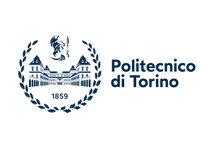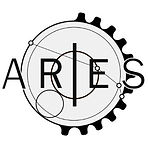The Workshop
Expand your knowledge about the human kinematics monitoring
Monitoring human motion and pose is fundamental in both rehabilitation sciences and assistive applications. For the former, automated kinematics tracking is crucial in facilitating the functional assessment of a patient's motion capabilities and discerning their specific needs; key factors like range of motion, movement speed, and acceleration provide valuable insights into overall motility. In the latter, achieving a real-time, precise, and accurate estimation of the user's musculoskeletal configuration is paramount for numerous wearable robotics applications to provide optimal assistive forces. Beyond these examples, the utility of human kinematics tracking extends to broader fields such as teleoperation, ergonomics, biomechanics, and more. Each application presents diverse requirements regarding precision and accuracy, adding a layer of complexity to the challenge of finding the optimal implementation.
Human posture tracking is a complex problem subject to numerous trade-offs, both due to the limitations of the available technologies and to the characteristics of the human body itself. For one, any wearable measurement system designed for skeletal kinematics monitoring is susceptible to errors due to soft tissue artifacts. Secondly, the human skeleton features numerous redundant, hardly observable degrees of freedom.
On the technology front, various measurement techniques and sensors were developed over the years, often within the scope of a particular field, and sometimes remained relegated there. Thus, finding the optimal technology for a given application is not trivial. By looking at the most used methods, it is possible to trace a summary picture of each strength and weakness. Optical tracking and video analysis rely on line of sight, with portability diminishing when external equipment is involved. Magnetic tracking is not dependent on line of sight but is sensitive to electromagnetic interference from EM field sources and ferromagnetic materials. Inertial measurement units, while generally more portable, can suffer from drift and may be prone to electromagnetic interference if relying on a magnetometer. Protractors are wearable and immune to drift error but may become cumbersome and potentially cause discomfort if misaligned with the user's joints if built into a rigid frame. If constructed with soft materials, their precision and accuracy may be compromised. Striking the optimal balance requires good knowledge of the sensing technology and the monitored anatomical structures.
This workshop aims to provide participants with a comprehensive view of the current state of posture tracking, incorporating diverse perspectives from experts in sensor technologies and end applications across academia, clinics, and industry. The ultimate goal is to offer a transversal overview of the technology across different fields and foster the networking of researchers active in human kinematics tracking.

Agenda
15:00 – 16:30 Session
-
Introduction
-
Giulia Bodo: Human-Exoskeleton Synergy: Overcoming Challenges and Unlocking Potential in Motion Assessment
-
Cristina Piazza: hand kinematic tracking
-
Federico Tessari: How Do You Maintain Posture? The Role of Brownian Processes in Human Neuromotor Control
-
Thomas Seel & Marek Sierotowicz: Using IMUs for Monitoring Human Kinematics + DEMO
-
Shiwen Mao: 3D Human Pose Tracking with RFID
-
Marek Sierotowicz / Francesco Missiroli demo
17:00 – 18:30 Session
-
Andrea Bottin: HDsEMG Bracelets for Movement Monitoring
-
Erika Trivino-Tonato: SELFEX: An XR Hand Movement Training Platform
-
Philipp Beckerle: Monitoring Human Kinematics in Wearable Robotics: Simple Approaches for Online Measurements
-
Marta Gherardini: The Myokinetic interface, implantable magnets for tracking muscle displacement
-
Marcel Betsch: Modern Gait and Posture Analysis Using Surface Topography
-
20-minute hybrid panel discussion (in-person + remote)
Our Affiliations





